Australia So Much to See


Many of us travel alone, be it a couple, one family or just one person. This means you can go where you want, when you
want, and change plans any time. Most long term travelers spent much of their time travelling solo. There are no safety
reasons not to travel solo unless you are taking very remote routes. For example, to go on the
In most cases camping alone will be quite safe, particularly if well away from towns and out of sight of the road. Some solo travellers like to camp where there are other campers to feel more secure and enjoy the company.
With the aid of UHF radio communication, travelling in convoy can be easy while keeping a kilometre or so apart. Before
starting out, set a meeting point at the next town or a rest area in case someone falls out of communication range. I have seen
groups travelling so close together, even in dusty conditions where visibility is poor and the vehicles will suffer from sucking in
so much dust. No-one can pass such a tightly packed group, and driving must be harder to stay so close but not run
into the next caravan or camper. Stay well apart when on the road.
Don’t spoil a good friendship – set the
rules before you leave. I have heard of lifetime friends starting out together and disagreeing so badly that they will never
speak to each other again. Conversely, I also heard of a couple planning to cross the
You will need
a more structured itinerary than when travelling solo, and this needs to be agreed on by all parties in your convoy before setting
out. Have plenty of time so each can see what they want, and so others in the group won’t feel frustrated if they have to wait
because of one of the party’s breakdown, or because one of the party wants to spend the day doing the laundry. Agree beforehand
what type of things will be visited where only one party has an interest in that area.
Allow for different itineraries
to suit individual interests with a meeting point which could be up to a week or so and some distance away, rather than everyone having
to go all go the same way and see what another person in the group wants when travel experience tastes are different.
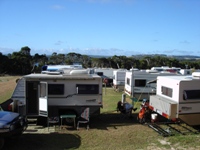
Try it out before making a commitment. If you have not already been doing so as a family, take short camping trips to places
they will enjoy to get the children to like the idea of camping and travel. If your children can’t sit still for five minutes
and complain "are we there yet" when the destination is home again after two years on the road, your trip will be torture for all.
Involve your children in trip planning so that things they choose are included and they feel part of the adventure rather than
just coming along because they had to.
Personal DVD players in the car are popular and these may keep children occupied and quiet for a while, however relying on this may prove counter-productive. If travelling long distances, it is far more important to keep the children interested in the area being travelled, as DVDs every day will soon become boring for them. Games involving the whole family such as I Spy, and animal spotting keep them looking outward instead of inward, and help to keep up their interest in the trip.
Children need plenty of opportunity exercise,
especially after sitting in their seatbelts for several hours. Taking bicycles is popular but they can be difficult to transport.
Other options include skipping ropes, balls games, totem tennis where the ball is tethered to a central pole and old games such as
hopscotch. These take up little room either when packing or space required for playing.
Get them involved; give
each on an area of responsibility. This way setting up and packing up camp will go smoothly, although they should also know
the other’s job in case one is ill at any time. Even pre schoolers can take pride in having an important job as their own.
You will most likely choose either home or correspondence schooling for long term travelling. Correspondence or home schooling
may be difficult once your children reach high school, so most who plan travel with children choose to do the travelling before children
reach high school age. Keep a regimented routine to ensure that lessons are done each day. Without the distractions and
needs of a whole class, work will be more focused and should not take a a lot of time out of the day. Relate the history, geography
or biology of the area into their education, making both the travelling and the school lessons more relevant and interesting.
On line computers are somewhat essential for a travelling education these days, and if you have only one for all the family, a roster system will have to be enforced. Much of the work can be done while not on line.
Have ‘diary time’ for
all the family either before or after the evening meal. Their diary can be simply an exercise book, which is ideal as some days
they may want to fill three or four pages, and other times it may take a few days to fill one page. If they are too young to
have their own digital camera, get them cutting pictures from the brochures you collect to add colour to their diary. Older
children may like to make their diary on the computer and of course you do not need to be on line to do this. They can incorporate
their own photos into their diary. Back up procedures are essential as technology can let us down.
Give the children the opportunity to socialise with others their age. Caravan parks, particularly during school holiday, can be good meeting places. Be prepared to stay a little longer in places where they have found new friends. Encourage them to share contact details with those they seem to have a good friendship with. They can then keep up email or even postal mail correspondence, something that can create life long friendships. Having someone to share their trip with will encourage them to pay more attention to detail and record interesting facts in their diaries to share with their new friends.
Many travellers take pets along, mostly dogs, but we have seen a number of travelling cats and a few caged birds. This does set limitations as pets are not permitted in National Parks and Nature Reserves, and in some cases may not even travel on roads through the park, although where a road passes through a park in most cases a pet is allowed, providing the pet remains in the car. Read about Pets in Parks for each state here
Your dog should be secured in a harness (dog seat belt) for his safety and yours. Ensure pet vaccinations are up to date. Consult your veterinarian about additional requirements for travelling in north Queensland.
Large towns usually have kennels so you can leave your pet in comfort while you visit nearby places he can’t. If you plan to leave you pet in the caravan in a rest area outside the park you are visiting, make sure the caravan will remain cool enough for your pet’s comfort. You will often be able to share dog sitting duties with other campers in caravan parks near popular National Parks. For those using Facebook, there is a new group Travelling Pet Minders that pet owners can join to link with like minded others and display a sticker indicating you are willing to share pet sitting with other travellers. Mad Paws is a website service that links pet owners with pet sitters who will look after your pet in their own homes. Top Dog Minders also has home based carers in some cities. To find kennels these websites are useful:Kennel Dog and Pet Care Professionals, also Facebook pages including: Travelling Pet Minders (Aust) and Pets on Me. In most cases you will need to show a current vaccination certificate to take you dog to kennels.
Camping with dogs: Some caravan parks do not allow pets, and in towns you may find either most or none of the parks will take pets. A good caravan park listing website with an emphasis on dog friendly parks is Gary Stratton's Complete List of Caravan Parks. Pets are generally permitted with strict conditions and at the discretion of the park proprietor. A pet bond may be charged. Dogs must be kept on a leash at all times when in the caravan park or in a town, unless there is a specified dog exercise area where dogs may run free. Droppings must be removed. Roadside rest areas and most community free or low cost campgrounds allow pets.
Doggy Holiday website also has some dog friendly camping listings. Pet Friendly Accommodation Guidebook has helpful articles on travelling with pets as well as the opportunity to purchase a guidebook of animal friendly accommodation, beaches and holiday places all around Australia. For travelling to Cape York with a dog.
Pet Places is a website of interest to pet owners.
A number of travellers have lost their dog due to it taking a poisoned bait. In agricultural and pastoral areas, 1080 baits can be laid for wild dog control. When stopping for a doggy comfort stop, be sure the dog does not stray, or pick up and eat anything. A muzzle is the safest way.
Never leave your dog unattended in your car. Fatalities have occurred due to overheating. Please read the links in the section above about children in cars.
Dog
registration seems to be a difficult area. You dog must be microchipped and licensed, but once you get into a different
Shire or State, regulations may require you to licence in that Shire, although this is quite impractical when you are travelling
through. I checked with my local Shire, and they would accept a dog licenced in another Shire as being licenced, provided contact
details were up to date.
Respect any quarantine requirements when crossing state and exclusion zone borders. SeeQuarantine and exclusion zones. Particularly check dog’s feet and bedding for seeds and shake any sand and soil from bedding.
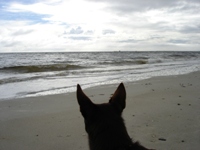
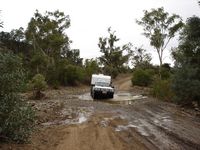
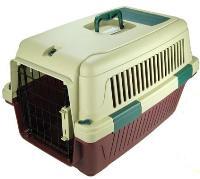
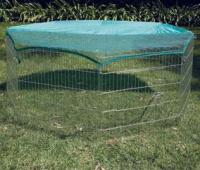
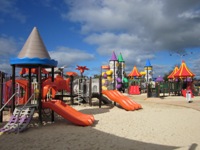
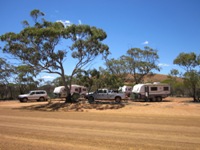
Where can you dine out with your dog in company? Health regulations did not permit dogs, apart from registered guide dogs, in
eateries. In 2012 the laws were changed to allow business owner discretion on allowing dogs in outside areas with their permission,
so long as certain conditions were met. One of the conditions is that the dog does not walk through the indoor area, so a street
café may be allowable, but not a back garden area unless there is a separate access. Pets or no pets is at the owner’s
discretion unless their local Council prohibits this.
Australia’s food regulator has ruled that dog owners may now bring their canine counterparts with them to restaurants, The Australian reports.
Under the current Food Standards Code, guide dogs are the only animals permitted to enter eateries in some states. The change will allow dog owners in some states to bring their pets into outdoor areas with permission from the eatery, as has been the practice in New South Wales, Victoria and South Australia.
More can be at Food Standards for Restaurants